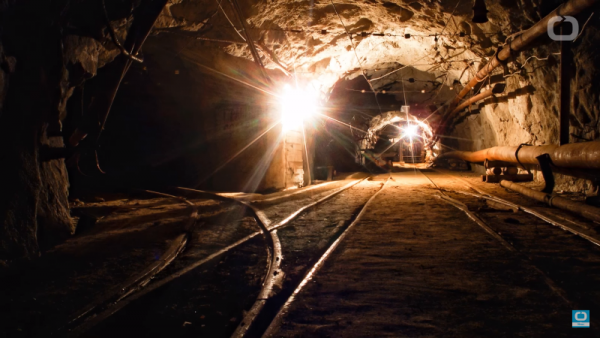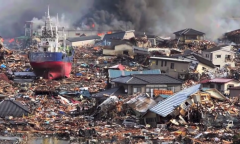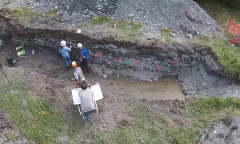By KM Diaz, | June 01, 2017

Scientists were set to drill a 750-meter-deep hole on Moab Khotsong mine in South Africa. (YouTube)
Drilling into the faults to understand what causes earthquakes is one of the challenges among scientists. Specialized tools, a lot of time and money, as well as skilled crews are needed by intercepting such ruptures. But now, scientists were set to drill a 750-meter-deep hole on Moab Khotsong mine in South Africa.
Like Us on Facebook
An unknown fault below the mine creates a magnitude-5.5 earthquake three years ago and aftershocks continue to occur. If the $1.6 million project will be successful, scientists could finally reveal the interior workings of the potential fresh fault - the one that experienced an earthquake for the first time. Understanding the damage of previous quakes could also provide new insights on how human activities likely trigger them.
The international project is called Drilling into Seismogenic Zones (DSeis), financed by International Continental Scientific Drilling Program. This has been the plan of Japanese researchers working in South Africa starting the fall of apartheid in 1991, whereas other attempts to drill active faults like Alpine in New Zealand and San Andreas in California that cost millions of dollars but only to yield one or two cores.
In Moab Khotsong mine, scientists have discovered a fast and relatively low-cost way to collect comprehensive data about the fractured rock that probably caused earthquakes. Geologist Yasuo Yabe from the Tohoku University said that they could not obtain the seismic origin in Japan, but in the mine, people are going in and out every day.
DSeis project plans to dig other mines to understand the magnitude-5.5 Orkney earthquake cracks under Moab Khotsong on August 5, 2014. The event was the largest earthquake in the country in 50 years. Other gold mines in South Africa have experienced repeated small earthquakes due to explosive excavations, but this particular quake is deeper and stronger.
The unknown fault is perpendicular and rocks slipped horizontally with each other rather than vertically. Mine companies are concerned about these mysteries as they need to plunge deeper but don't want to encounter seismic surprises. And so, Seismologist Hiroshi Ogasawara from the Ritsumeikan University includes Orkney quake to their list of targets to DSeis.
Orkney earthquake has a quiet tectonic environment and came from a fault that only cracked for once or few times, according to DSeis collaborator William Ellsworth. Such faults have no "rock flour" that makes up an active fault because they crumble, making it difficult to see how individual earthquake could rupture energy into pulverizing rock, strain, heat, and seismic waves.
The Moab Khotsong mine is challenging work environment because it is the home of the deepest mine shaft in the world. At this time, the drilling level is 95 floors below with a 10-minute ride using a rail carriage from the site. The atmosphere is quiet and the air has a bitter scent of ammonia from current dynamiting and burnt rock. Geomicrobiologist Tullis Onstott from the Princeton University said that the smell is linked to Hades.
Apart from these, scientists seek on how human activities could trigger an earthquake. For instance, the underground distribution of wastewater from gas and oil in the United States has been known to cause earthquakes by increasing force in the rock pores.
But Geophysicist Ze'ev Reches from the University of Oklahoma said that pore pressure is unlikely to trigger an earthquake in South Africa, though he also noted that Orkney quake occurred in deep in basement rock with unmapped fault.
-
Use of Coronavirus Pandemic Drones Raises Privacy Concerns: Drones Spread Fear, Local Officials Say

-
Coronavirus Hampers The Delivery Of Lockheed Martin F-35 Stealth Fighters For 2020

-
Instagram Speeds Up Plans to Add Account Memorialization Feature Due to COVID-19 Deaths

-
NASA: Perseverance Plans to Bring 'Mars Rock' to Earth in 2031

-
600 Dead And 3,000 In The Hospital as Iranians Believed Drinking High-Concentrations of Alcohol Can Cure The Coronavirus

-
600 Dead And 3,000 In The Hospital as Iranians Believed Drinking High-Concentrations of Alcohol Can Cure The Coronavirus

-
COVID-19: Doctors, Nurses Use Virtual Reality to Learn New Skills in Treating Coronavirus Patients











